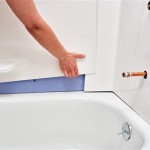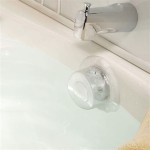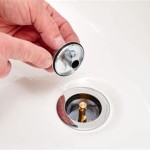Bathtub Mildew Cleaner: Understanding, Prevention, and Effective Removal
Bathtub mildew is a common household problem, thriving in the warm, humid environment created by regular showering and bathing. This unsightly and potentially unhealthy growth can quickly colonize grout lines, caulk, and even the surface of the bathtub itself. Understanding the nature of mildew, implementing preventive measures, and knowing how to effectively clean it are crucial for maintaining a clean and healthy bathroom environment. This article provides a comprehensive overview of bathtub mildew, focusing on its identification, prevention, and removal using a variety of cleaning methods.
Mildew, a type of fungus, is closely related to mold. Both thrive in moisture-rich environments and reproduce through airborne spores. While often used interchangeably, mildew generally refers to surface-level fungal growth that is typically white, gray, or yellowish. It tends to be less aggressive and easier to remove compared to mold, which can penetrate deeper into surfaces and present more significant health risks. However, neglecting mildew can allow it to progress and potentially create conditions favorable for mold growth. Regularly addressing mildew is therefore paramount.
Bathtubs provide an ideal habitat for mildew due to consistent exposure to water, soap residue, and the humidity resulting from hot showers and baths. Poor ventilation exacerbates the problem, trapping moisture and creating a breeding ground for fungal spores. Left unattended, mildew not only detracts from the bathroom's aesthetics but can also trigger allergic reactions in sensitive individuals, causing symptoms such as coughing, sneezing, and skin irritation.
Identifying Bathtub Mildew
Recognizing mildew in its early stages is crucial for effective removal and prevention of further spread. Common signs of bathtub mildew include small, black or grayish spots appearing on grout lines, caulk, and the bathtub surface. These spots may initially appear as isolated specks but can quickly expand and merge into larger patches if left untreated. A musty odor emanating from the bathroom can also indicate the presence of mildew or mold. Inspecting the bathtub area regularly, particularly after showering or bathing, can help identify mildew growth early on.
Distinguishing between mildew and mold is important for choosing the appropriate cleaning method. Mildew typically grows on the surface and can be easily wiped away. Mold, on the other hand, often penetrates deeper into materials, making it more difficult to remove and potentially requiring professional remediation in severe cases. If the discoloration is deeply embedded or has a fuzzy texture, it is more likely to be mold than mildew.
Pay particular attention to areas where water tends to accumulate, such as around the drain, along the edges of the bathtub, and in the corners. These are prime locations for mildew growth. Also, check the shower curtain or door, as these surfaces are frequently exposed to moisture and can harbor mildew spores.
Preventing Bathtub Mildew
The most effective strategy for dealing with bathtub mildew is prevention. By minimizing the conditions that support its growth, individuals can significantly reduce the likelihood of its occurrence. Several practical steps can be taken to create a less hospitable environment for mildew in the bathroom.
Ventilation is key to preventing mildew growth. Ensure adequate airflow by opening windows or using an exhaust fan during and after showering or bathing. This helps to quickly dissipate moisture and reduce humidity levels. If an exhaust fan is not available, consider installing one. Proper ventilation is a long-term solution that benefits the entire bathroom environment.
After showering or bathing, wipe down the bathtub and surrounding surfaces, including the walls and shower door or curtain. This removes excess water and soap residue, depriving mildew of the moisture and nutrients it needs to thrive. Using a squeegee or a microfiber cloth is an efficient way to remove water from these surfaces. This simple habit can significantly reduce the frequency of mildew growth.
Regularly clean the bathroom, including the bathtub, with a mildew-resistant cleaner. This helps to remove any existing mildew spores and prevent them from colonizing. Choose a cleaner that is specifically designed for bathroom use and that contains antifungal agents. Follow the manufacturer's instructions carefully when using these products.
Consider using a shower curtain or door that is treated with a mildew-resistant coating. These products can help to inhibit mildew growth and make it easier to keep the shower area clean. Regularly wash or replace the shower curtain or liner to prevent the buildup of mildew spores. Fabric shower curtains should be washed in the washing machine with hot water and detergent, while plastic liners can be wiped down with a mild cleaner.
Address any leaks or plumbing issues promptly. Leaking faucets or showerheads can create a constant source of moisture that promotes mildew growth. Repairing these leaks will not only prevent mildew but also conserve water and prevent further damage to the bathroom.
Effective Bathtub Mildew Cleaning Methods
Despite preventive measures, mildew may still appear in the bathtub. Several effective cleaning methods can be used to remove mildew and restore the bathtub's cleanliness. The choice of method depends on the severity of the mildew and the type of surface being cleaned.
One commonly used method involves a solution of bleach and water. Mix one part bleach with ten parts water and apply the solution to the affected areas using a sponge, brush, or spray bottle. Allow the solution to sit for 10-15 minutes, then scrub the area thoroughly with a brush. Rinse with clean water and dry the surface. Always wear gloves and eye protection when working with bleach, and ensure adequate ventilation to avoid inhaling fumes. Bleach can be effective at killing mildew spores, but it can also damage certain surfaces, so it is important to test the solution in an inconspicuous area first.
Another effective cleaning solution is white vinegar. Vinegar is a natural disinfectant and antifungal agent that is safe to use on most surfaces. Spray undiluted white vinegar onto the mildewed areas and let it sit for at least an hour. Scrub the area with a brush or sponge and rinse with clean water. Vinegar's acidic properties help to break down mildew and remove it from the surface. While vinegar is generally safe, it is still advisable to test it in an inconspicuous area before applying it to the entire bathtub.
Baking soda is a versatile cleaning agent that can also be used to remove bathtub mildew. Make a paste of baking soda and water and apply it to the affected areas. Let the paste sit for several hours or overnight, then scrub the area with a brush or sponge. Rinse with clean water. Baking soda is a mild abrasive that can help to lift mildew from the surface. It is also a natural deodorizer, which can help to eliminate any musty odors associated with mildew growth.
For stubborn mildew stains, consider using a commercial mildew remover specifically designed for bathroom use. These products typically contain stronger chemicals than household cleaners and can be more effective at removing deeply embedded mildew. Follow the manufacturer's instructions carefully when using these products, and always wear gloves and eye protection. Ensure adequate ventilation to avoid inhaling fumes.
For grout lines, use a grout brush or an old toothbrush to scrub the mildewed areas. Grout is porous and can easily trap mildew spores, making it difficult to clean. A grout brush can help to reach into the crevices and remove mildew effectively. After cleaning the grout, consider sealing it with a grout sealer to help prevent future mildew growth. A grout sealer will create a barrier that repels water and prevents mildew spores from penetrating the grout.
Finally, after cleaning the bathtub, dry it thoroughly to prevent the return of mildew. Use a clean towel or cloth to wipe down all surfaces, paying particular attention to grout lines and corners. Maintaining a dry environment is crucial for preventing mildew growth.
By understanding the nature of bathtub mildew, implementing preventive measures, and using effective cleaning methods, individuals can maintain a clean, healthy, and aesthetically pleasing bathroom environment. Regular maintenance and prompt attention to any signs of mildew growth are essential for preventing more serious problems and ensuring a comfortable bathing experience.

30 Seconds 32 Fl Oz Clean And Fresh Scent Shower Bathtub Cleaner 100550402 At Com

Zep 32 Oz Mold And Mildew Stain Remover Zumildew32 The Home Depot

Magic Mold Remover Gel Household Cleaner Mildew Cleaning Home Tile Bathtub For Washing Machine

Rmr Solutions 32 Fluid Ounce S Modern Orchard Shower And Bathtub Cleaner In The Cleaners Department At Com

Zep 32 Oz Mold And Mildew Stain Remover Zumildew32 The Home Depot

Oxiclean Bleach Mold Mildew Stain Remover

Clr Pro Fm Mmsr32 6pro Mold Mildew Stain Remover 32 Oz

Rmr Mold And Mildew Stain Remover For Tub Tile 32 Fl Oz Pack Of 1

Reviews For Scrubbing Bubbles 32 Fl Oz Foaming Bleach Bathroom Cleaner 6 Pack Pg 4 The Home Depot

30 Seconds 32 Fl Oz Clean And Fresh Scent Shower Bathtub Cleaner 100550402 At Com
Related Posts








